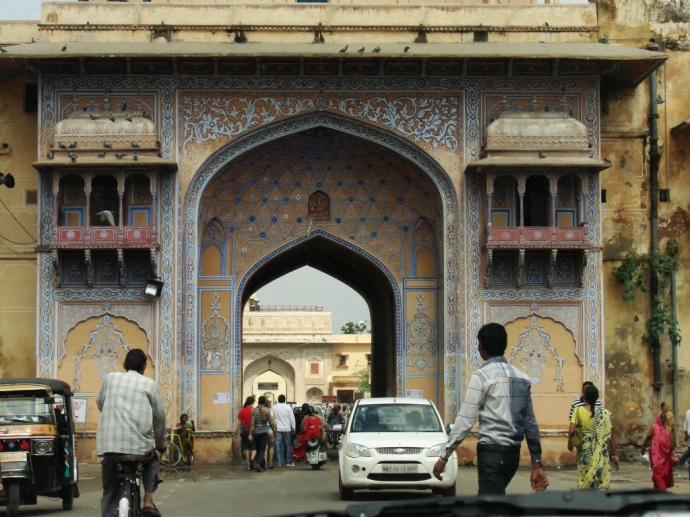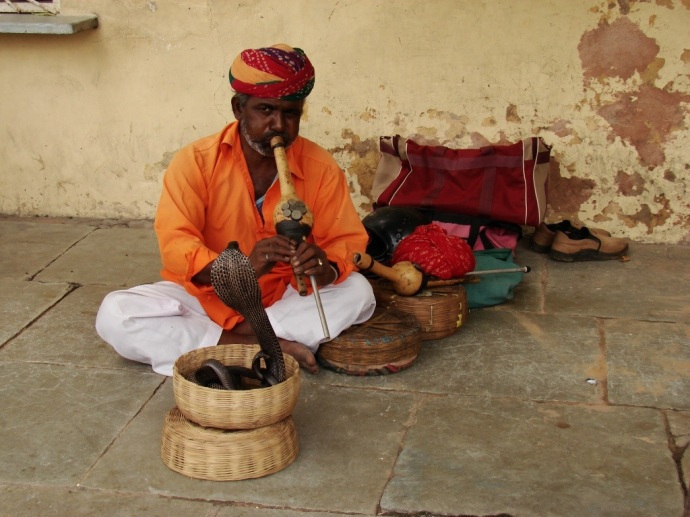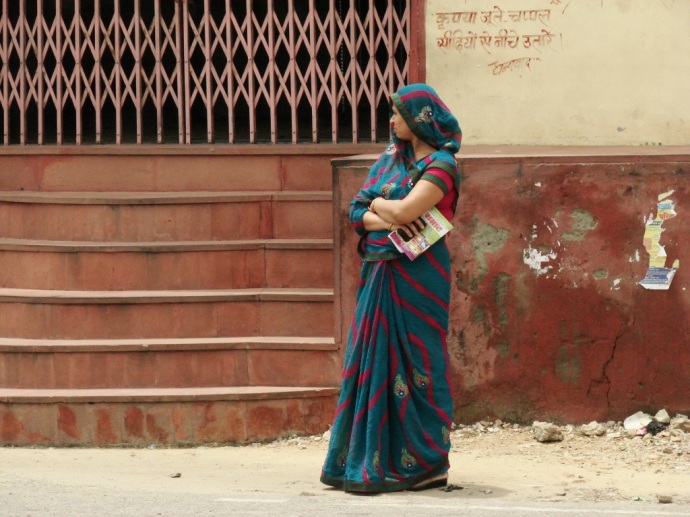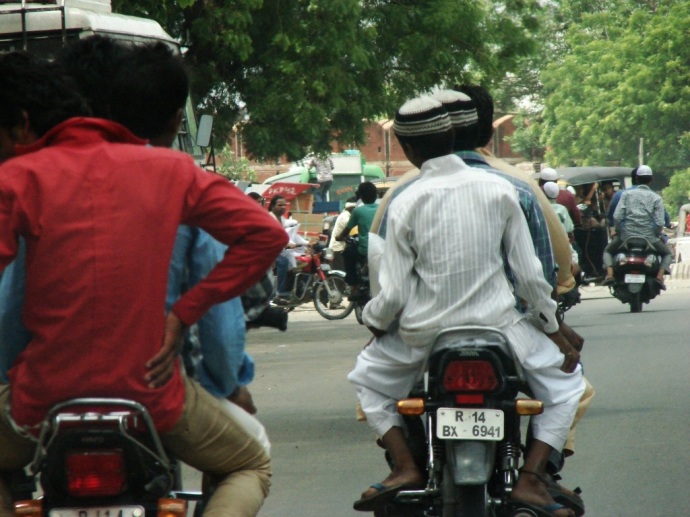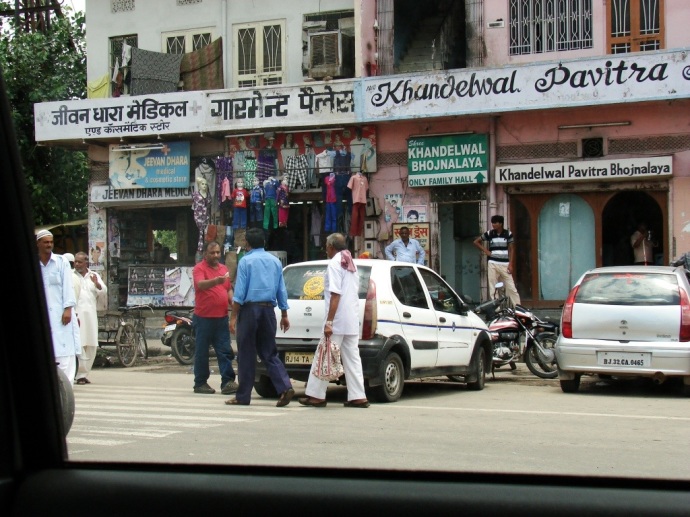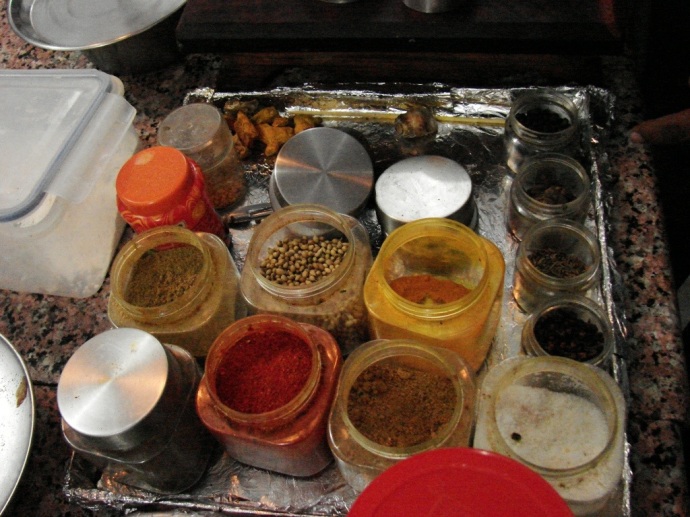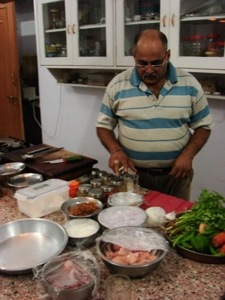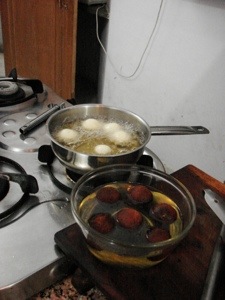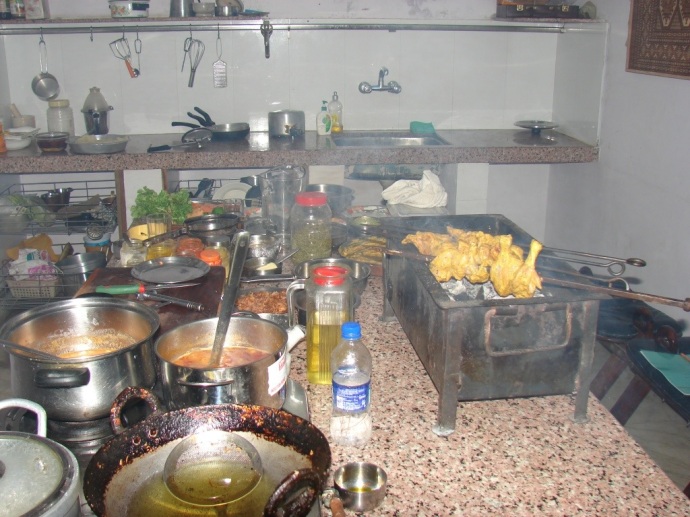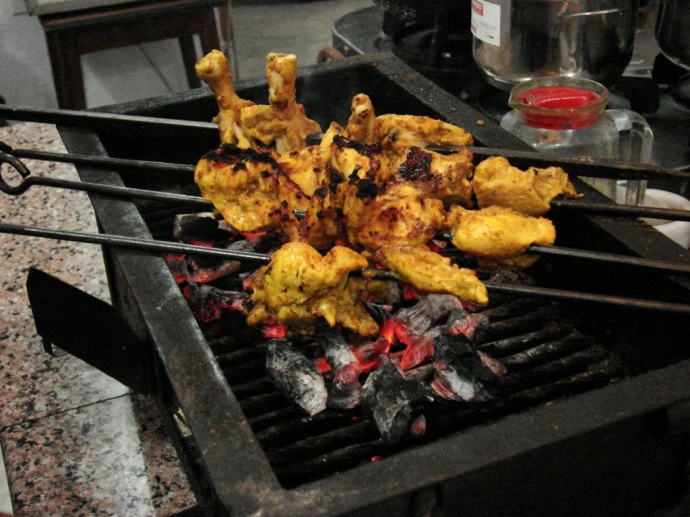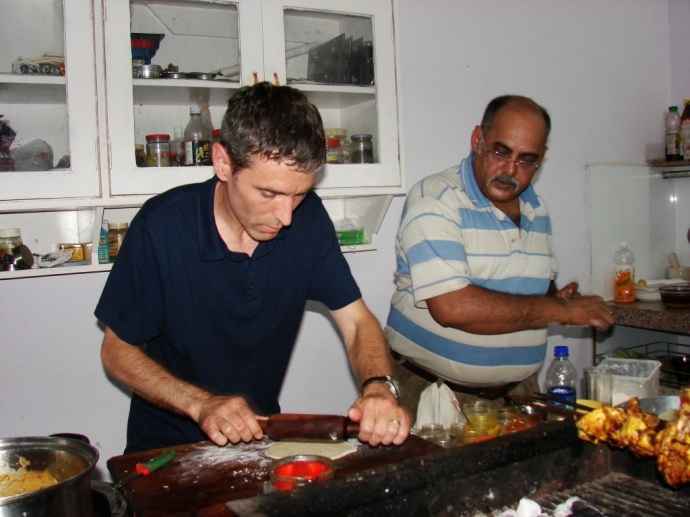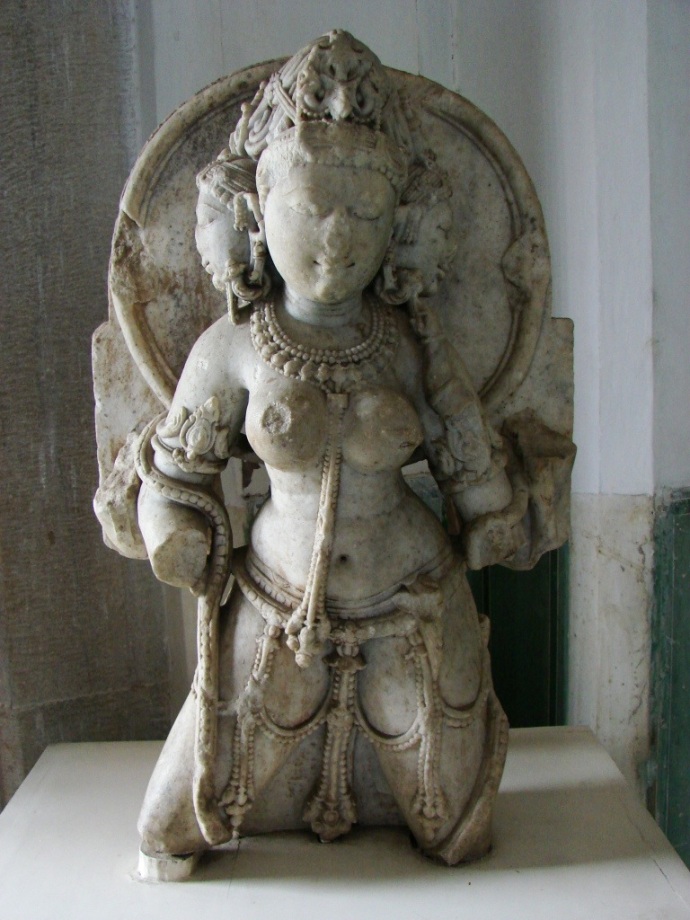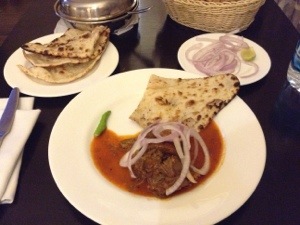Jaipur is simply fantastic. Situated in Rajasthan, Jaipur is one of the three points in the golden triangle, along with Agra and Delhi. Jaipur has much to offer, from dizzying array of historic sites to cultural experiences. Also known as the Pink City, Jaipur is a city of many colors. Of the numerous highlights of our trip, Jaipur provided several, including some of the most spectacular scenery. More on Jaipur to come.
Culture
Distribution of Islam in India
India is a large and very diverse population. India strives for plurality, but as is often the case, harmony can be difficult. Some basic tenets between Hinduism and Islam can be at odds with one another, and conflict has erupted historically and recently.
Analyze the map* below then respond to the prompts that follow.
DISTRIBUTION OF ISLAM IN INDIA BY STATE
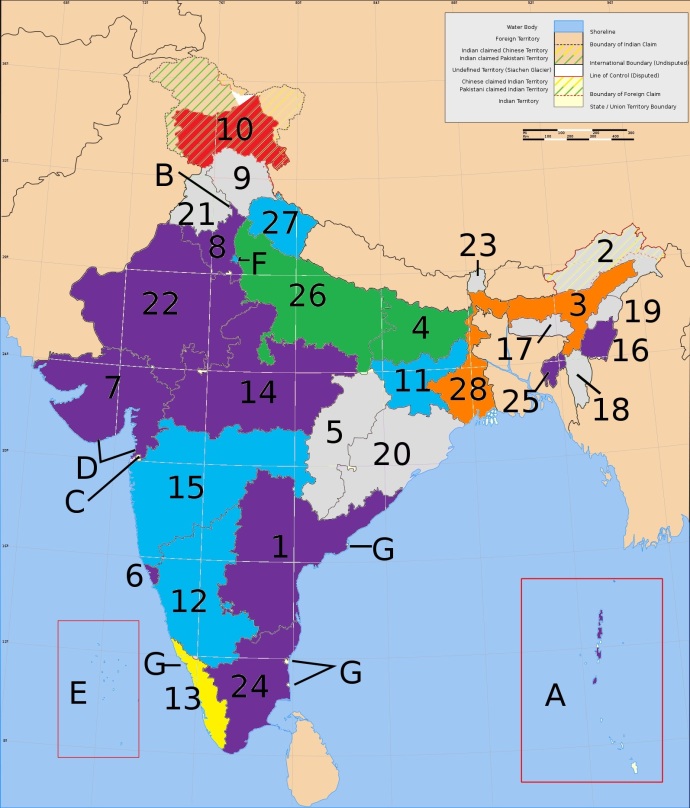
KEY:
Red – 50-100%
Orange – 25-50%
Yellow – 20-25%
Green – 15-20%
Blue – 10-15% – Indian National Average
Indigo – 5-10%
Gray – < 5%
STATES BY NUMBER:
1. Andhra Pradesh
2. Arunachal Pradesh
3. Assam
4. Bihar
5. Chhattisgarh
6. Goa
7. Gujarat
8. Haryana
9. Himachal Pradesh
10. Jammu and Kashmir
11. Jharkhand
12. Karnataka
13. Kerala
14. Madhya Pradesh
15. Maharashtra
16. Manipur
17. Meghalaya
18. Mizoram
19. Nagaland
20. Orissa
21. Punjab
22. Rajasthan
23.Sikkim
23.Tamil Nadu
24.Tripura
25. Uttar Pradesh
26. Uttarakhand
27. West Bengal
(Map courtesy of Rode Idias, Wikimedia Commons)
PROMPT:
1. Using the map showing the distribution of Islam in India, predict where you think the most conflict may occur between the Hindu and Muslims in India. Explain why.
2. Read about the events that happened while Mr. Wright was in India, and about the history of this disputed region here . Was your prediction correct?
3. What can we conclude about the nature of border conflicts from this case study?
FURTHER READING:
For more information about this topic research the topic keywords:
India, Partition, Line of Control, LOC
Jaipur Cooking Class
Being able to experience the culture of India during my Hilton Honors Teacher Trek (#HHTeacherTreks) has been amazing… And culture includes food! I love cooking and food, and love Indian cuisine, so taking Chef Lokesh Mathur’s Jaipur Cooking Classes was an exciting opportunity! I am so glad because it has been one of the big highlights of our trip!
Chef Lokesh has cooked for crown princes and emirs throughout the Mideast, he has worked in the hotel industry, and taught at colleges for years. He is an interesting and congenial person who is also a great conversationalist. Equally enjoyable was meeting his lovely wife and family, with whom we had dinner.
Our class was simply a fantastic experience, and we came to appreciate it as an excellent value as well. You can choose your style of menu from several regional variations, and you can choose from veg or non-veg options. Lokesh picked us up from our hotel, presented us with printed menus for the multiple dishes we were about to prepare while we got to know one another over cups of chai. We were then introduced to the numerous ingredients for the many wonderful dishes, including detailed discussion of Indian spices.
Over the course of the next several hours, we prepared multiple and varied dishes, including desert, breads, chutneys, and the spicy meat dishes I requested. Techniques were covered in a very understandable and accessible manner. When we got too hot and needed break, we had more chai. 🙂
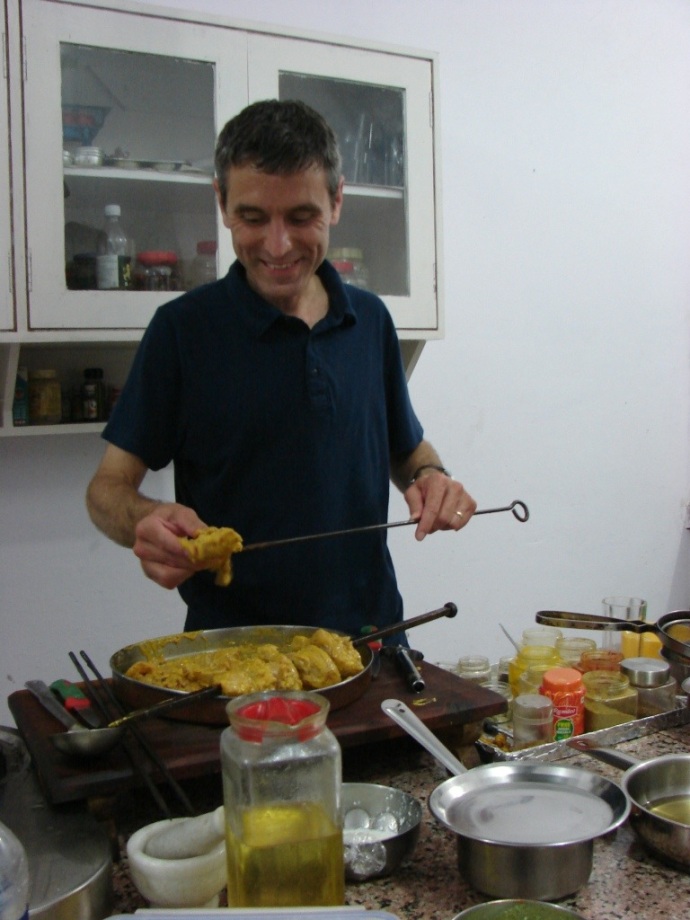
The very full night resulted in several wonderful dishes, including the fantastically flavored meat dishes I requested. I loved making the very ubiquitous naan flatbread, and the chutney we made was the best I’ve tasted. My favorite dish, although hard to choose, was probably the Rajasthani Lamb, complete with the very flavorful garlic, peppers, and irresistible lamb stock.
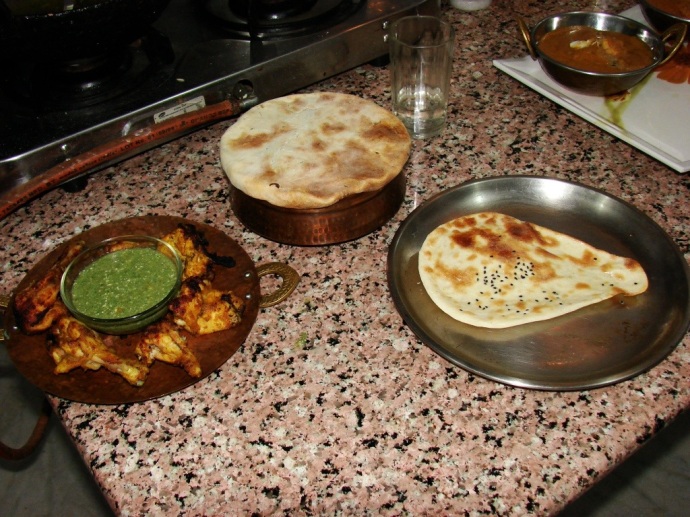
After about 5 house of great conversation, demonstration, preparation, and cooking, we sat down to eat the many wonderful dishes we prepared in the company of Lokesh’s charming wife and her visiting sister. It was simply wonderful, and at least as enjoyable as the cooking lessons. My one regret is that I didn’t get a photograph of the table with all the completed dishes. After about six fantastic hours, Lokesh boxed up the food we couldn’t finish, and he delivered us back to our hotel.
If you are the slightest bit interested, I really encourage you to check out Lokesh’s Jaipur Cooking Classes. I sincerely hope I will one day get the chance to visit Lokesh and his family again for another round of classes. Meanwhile, I am taking with me a small piece of Indian culture that I will forever relish — something better than any souvenir from a gift shop!
Saraswati, Goddess of Knowledge
My wife and I are educators. As such, we have both come to have a fondness for Saraswati, the Hindu goddess of knowledge, education, learning, and the arts. Saraswati is the consort of Brahma, and her knowledge brings order out of chaos, a metaphor I appreciate.
Although often depicted riding a swan, playing a musical instrument called a vena, and carrying a book, this early sculpture (above) is one of my favorite representations of her. It can be seen at the City Museum in Jaipur, Rajasthan.
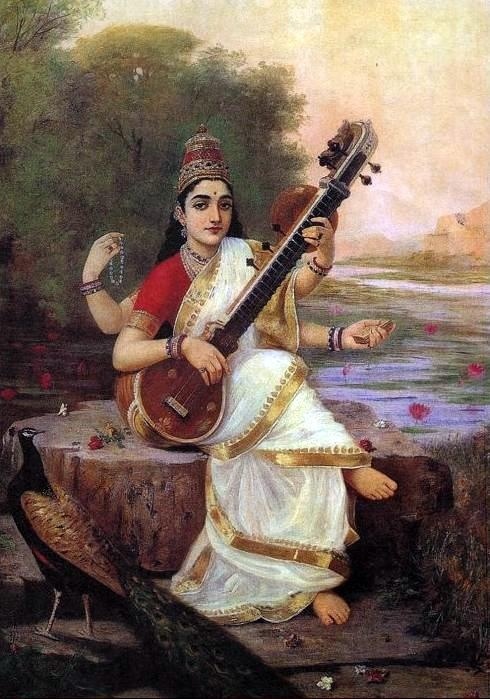
(Raja Ravi Varma, Goddess Saraswathi, oil on canvas, 1896. Maharaja Fateh Singh Museum, Lakshmi Vilas Palace, Vadodara, Gujarat. Courtesy Wikimedia Commons)
Hinduism
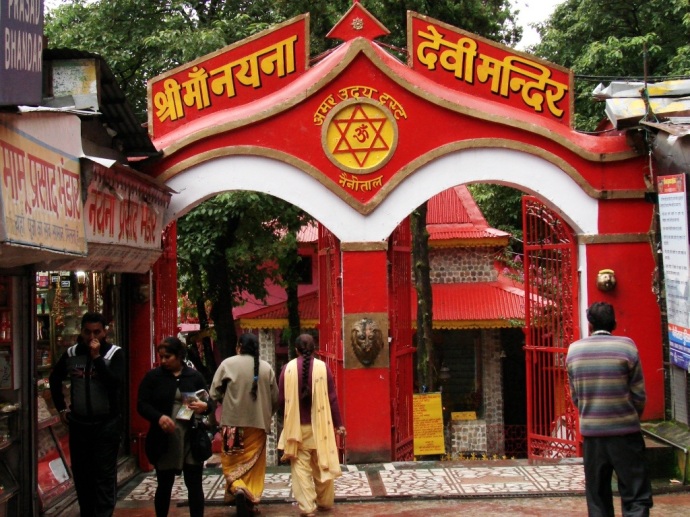
Hindu Temple, Nainital, Uttarakhand.
Wherever one goes in India, a frequently seen thread in the fabric of Indian culture (and neighboring Nepal) is that of Hinduism. It is seen in frequent shrines and temples scatted throughout India, seen in the colorful flower and cloth offerings available to devotees in street-side stands, seen in the bindi dot worn by many on the forehead. Approximately 80% of India’s 1.2 billion population practices Hinduism (BBC).
Despite it prevalence and status as a world religion, Hinduism, I think, is largely misunderstood by westerners. I do not claim to be an expert on Hinduism, but I have had the opportunity to observe and interact with Hindus for weeks. During that time what has struck me as most erroneous is the typical western view of Hindus worshiping multiple gods in what is often characterized as an idolatrous manner. Yes, there are many significant Hindu “gods” that fit into a pantheon and are interwoven into allegorical stories that reach back millennia into the Vedic texts. And yes, these “gods” are depicted as having superhuman and/or animal characteristics to whom reverence is shown and offerings are given. However, to stop there at that superficial level of observation is shortsighted.
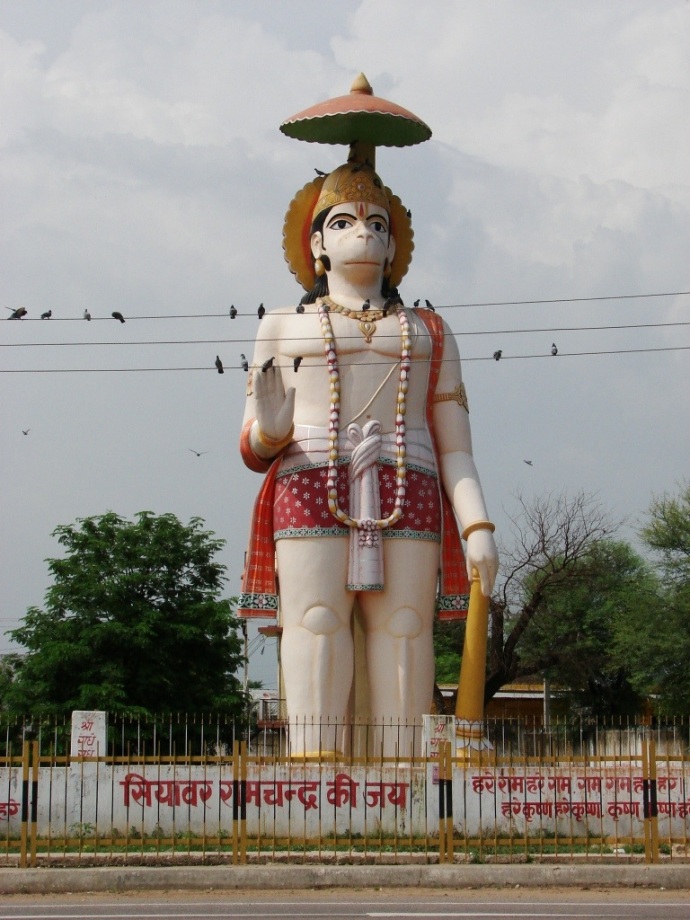
Hanuman, the monkey god, a monumental sculpture seen on the road to Jaipur.
The numerous gods present throughout the Hindu world, though worshipped and part of a complicated stories, are but many manifestations or avatars of a single omnipresent and omnipotent creator. A Hindu practitioner told me, “there are many names but only one God.” Hindus may say that God has taken on a physical form as a man, or as a “god” with anthropomorphized animal characteristics, all are said to be manifestations of the creator of the universe — that which cannot be fully conceived. This supreme entity is also symbolized as Om
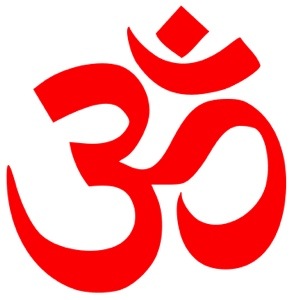
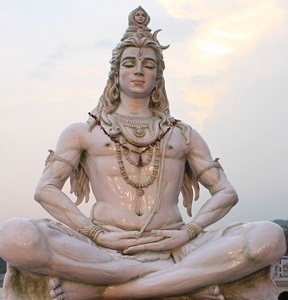
(Om symbol & Shiva, Courtesy Wikimedia Commons)
In it’s barest essence, Hinduism believes in the existence of one infinite Supreme Power, or God, worshipped by Hindus in various representative forms, such as of the Father or the Mother and Who is the Creator and progenitor of the Universe. The most fundamental tenet of our religion lays down that doing good to other beings is the highest form or Worship of the the Lord and, conversely, harming them the worst form of sin.
-Birla L.N., Hinduism: A Philosophy of Life
Shri Lakshmi Narain Temple, New Delhi
Language in India

For APHG Students: India has 24 recognized languages spoken throughout its diverse population and wide-ranging regions. Using the front and back of the 500 Indian Rupees bill (about $8 at the time of this post), answer the following questions:
What evidence do you find for multiple languages in India?
How many languages do you see evidence for?
What language or languages appear to be dominant?
Synthesis: what might be other effective ways for bridging the language barrier when so many languages are spoken in one country?
World History:
Who is the main figure depicted on this bill and why would India utilize his image?
A Taste of India
The spiced chai and Mutton Roganosh (a spicy curried lamb) were delicious. They kind of help take the edge off of a 12-hour jet-lag and the shock Delhi presents to a first-time visitor.
Yum.
I would try to describe the flavor of the lamb, but that would be like trying to describe how a rose smells.
Made it!
After a loooong 26 hours of travel by planes, trains, and automobiles, I made it to Delhi! I can tell you this: driving through the streets of Delhi at 2AM to get to the B&B was definitely a cultural experience unlike any I have ever had! I will try to find the words to describe it later, but I need to try and convince my body to sleep.
Saggin’
They are saggin’ in Srinigar.
http://bbc.in/13vhSAO
What type of cultural diffusion is that?

